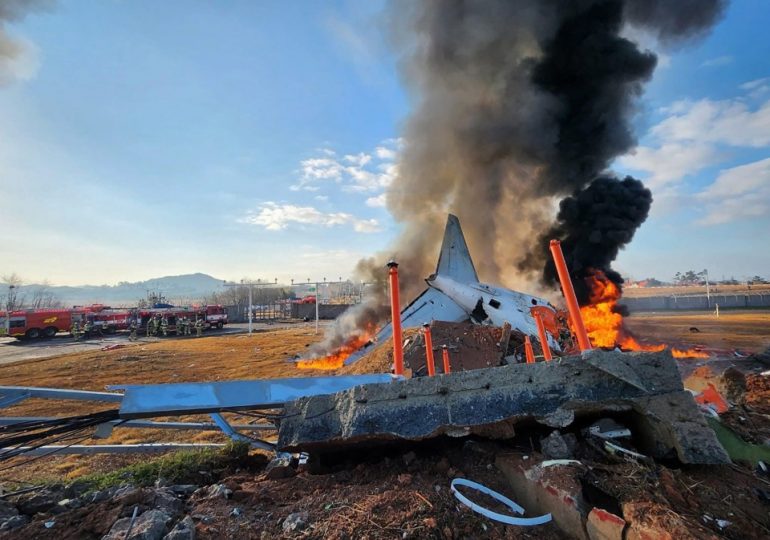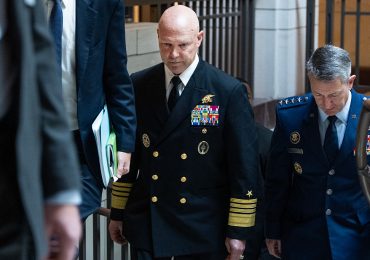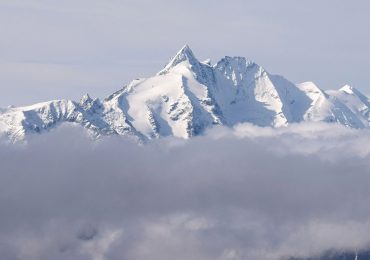BOSSES of the South Korean airline whose plane crashed allegedly knew that the concrete wall it smashed into was too close to the runway.
The Boeing 737-800 was thought to have been struck by a bird in one of its engines before it failed to lower landing gear and skidded across the runway, smashing into the wall and imploding.
UKNIPThe plane smashed into a concrete embankment before blowing up[/caption]
One of the survivors of the disaster being taken to hospital
AlamyA police forensic team conducts an on-site investigation at the scene of the crash[/caption]
All but two of the 181 people onboard tragically died in the horrific smash, one of South Korea’s worst ever aviation disasters.
The enormous Jeju Air jet belly-landed at Muan International Airport on Sunday before ploughing into the sand and concrete embankment.
Comments in the airport’s operating manual – uploaded early this year – said the embankment was too close to the end of the runway.
It recommended that the equipment location be reviewed during a planned expansion project at the airport, Reuters reports.
A Korean transport ministry official said today that officials would have to examine the manual before answering questions.
Captain Ross Aimer, chief executive of Aero Consulting Experts, told the news agency: “Unfortunately, that thing was the reason that everybody got killed, because they literally hit a concrete structure.
“It shouldn’t have been there.”
Authorities are scrambling to discover the cause of the crash and work out exactly why the pilot attempted to land after declaring an emergency.
Meanwhile loved ones of those who died in the accident have been camped out at the airport waiting for news.
Police have not yet been able to identify all the victims – with some 600 different body parts thought to have been recovered in the wreck.
Officials yesterday said the pilots reported a bird strike as they approached the airport.
It apparently came just after the control tower warned that birds had been spotted in the vicinity.
Data on FlightRadar24 showed the plane’s approach from the south – with its movements ending close to bird feeding and roosting hotspots.
Only two of the 181 onboard the light survived, Both were members of the cabin crew who were sitting at the back of the plane when it crashed.
The tail was the only portion of it not destroyed, with pictures showing it to be the only remaining piece of wreckage after the blast.
Muan fire chief Lee Jung-hyun, who worked on extinguishing the blaze, said: “Only the tail part retains a little bit of shape, and the rest of [the plane] looks almost impossible to recognise.”
Cabin crew seats are often at the front and back of the plane.
Most casualties and deaths sustained during plane crashes happen at the front.
On Boeing 737-800s, fold-down seats for staff are put next to the rear doors.
This is where the 33-year-old male flight attendant and his female colleague, 25, were found.
Tragically many bodies were badly damaged in the crash – making it challenging for authorities to identify victims.
Officials have been accused of “neglecting” the remains of victims and leaving bodies on the floor of the hangar in the aftermath of the crash.
The head of the bereaved family council of the Jeju Airplane disaster lashed out at authorities for failing to quickly install freezers.
He said: “Unlike the government promised, the victims’ remains are being neglected.
“The government promised to install freezers to manage the remains, but the installation was delayed and the remains were left on the floor of the hangar.
“The staff accompanied by the deputy prime minister reported that the freezer installation was going well, but this was not true.”
Dozens of grieving relatives have been camped at the airport since the crash, desperately waiting to see the bodies of their loved ones.
Black smoke and flames pouring from the wreckage
AlamyOfficials lay flowers in tribute to the victims of the crash[/caption]
Leave a comment








